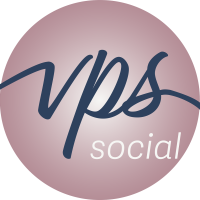Content pillars are essential to creating good content that you need to utilize. When you use content pillars in conjunction with strategic research and a deep understanding of your ideal client, they can ensure your topics and messages are informative, engaging, and valuable to your target audience.
What are content pillars?
Content pillars are themes or topics used to organize and structure your content. They provide a consistent focus and help define a brand’s core values. Planning your social media content becomes easier when you implement content pillars into your content strategy.
The benefits of using content pillars include the following:
- Improved Focus
Content pillars help you create a consistent focus for your creation and curation by helping you define your brand’s core values and topics.
- Targeted Content
You will develop content strategies tailored to the topics and messages most relevant to your target audience.
- Increased Engagement
By curating content based on your content pillars, you are ensuring that the content is interesting and valuable to your audience, encouraging them to engage with you.
- Streamlined Processes
Content pillars provide a clear and organized structure for content creation and curation that simplify the process and reduce the time spent on creating good content.
- Overall Consistency
A sense of consistency is accomplished throughout your content pieces, whether social media posts, blogs, infographics, etc. Content pillars help you to create a consistent voice and tone that clearly identifies your brand. If you share content from others, it should align with your content strategy.
Without having a defined structure for your content, you have no direction, and it becomes a challenge to be consistent in creating good content for your brand.
Now that you understand the importance of using content pillars in your content strategy, you may wonder how to identify what content pillars are suitable for your brand and your ideal client.
The first step goes back to understanding your audience. Without understanding this concept well, it can be challenging to create messaging.
These aspects need to consider to understand your audience:
- The platforms they use.
- Their values.
- What motivates them.
- The problems they have that you can solve.
- The demographics of your audience.
Once you have a good handle on your audience, look at your unique value in the market. What unique features, benefits, and experiences do you offer that your competitors do not? Again, you must understand your target audience to meet their needs compellingly.
Take a look at your existing content. First, look at the topics that are most commonly covered. Next, find the messaging that received the most engagement to understand what resonated with your audience. Also, look for areas you may need to cover that will be relevant to your ideal client.
Next, you need to research your competition. Create a list of your top competitors and review their content and messaging. What topics are they talking about that get good engagement? Where are there gaps in their content that you can fill? Refer to these gaps when you are creating your content pillars.
With this understanding, you should have a good sense of the topics that should be part of your content pillars. For small to medium businesses, 3-5 pillars are ideal. These should be the topics that your audience cares about most.
With these topics identified, you will need keyword research to understand how your audience searches for these pillar topics. To rank better in search results, you should match your focus keywords with the questions people are searching for in the search engines. There are keyword search tools available to help you with the process. Hubspot offers a Beginner’s Guide if you need help doing this research.
Now with your topics and keywords identified, you can assemble content around your pillars.
You should consider these three areas when curating your content:
Shareable content
Curating content from other people or brands to share on your social media can be helpful to your content strategy. Some things to consider when sharing content are:
- Credit your sources. You can tag and link to the original creator.
- Audience relevance. Be sure the content is relevant to your audience and aligns with your brand identity.
- Add your thoughts. Add a brief sentence or two about why you think this is useful for your ideal client.
Original content
Your original content should relate to your content pillars, communicate your unique value proposition, and stand out from competitors’ content. Take time to write well-researched and accurate messaging.
Repurposed content
Use the content you have already created that is related to your new content pillars and will be relevant to your target audience. You can create different forms of content, such as blog posts, articles, videos, and social media posts. Consider the platforms you will use and the old content to create effective updated content. You can learn more about repurposing content in this blog post.
Creating content that is valuable to your target audience is essential. Content pillars provide a consistent focus for content creation and curation. These content pillars will help you define your brand’s core values and topics. In addition, curating content and repurposing content are great ways to provide value in a more time-efficient manner.








